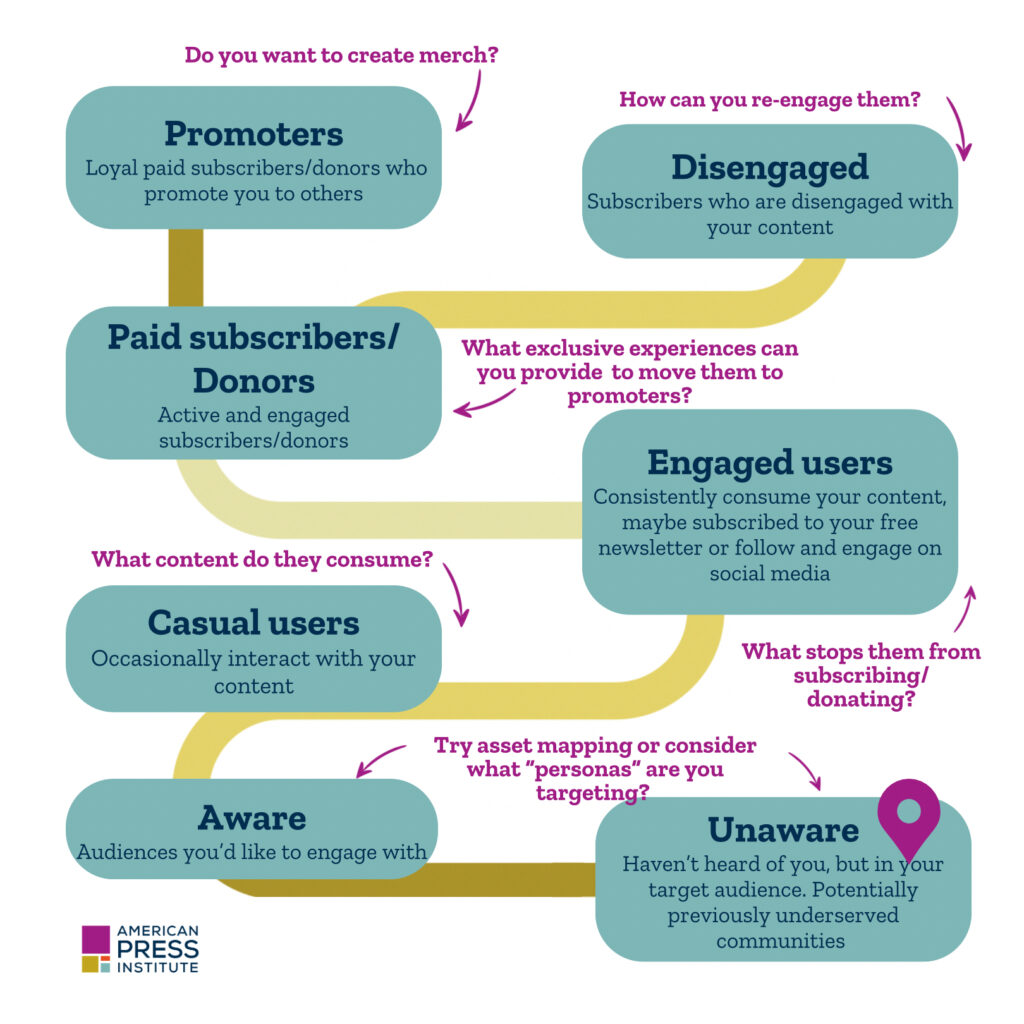A positive audience experience is vital for revenue and sustainability. When developing new beats, offerings, events or products, it’s crucial to take a step back and consider your audience’s journey. Mapping your audience journey can help you find gaps, drive loyalty and provide opportunities to build a more thoughtful and frictionless experience.
You often hear about marketing audience funnels — which include stages like awareness, consideration, conversion and loyalty — and why it’s important to have different tactics for marketing to each of the different funnel stages. However, using audience journeys further expands the stages, starting from unaware audiences that you want to reach and ending with promoters who will share your work with their networks. Targeting the “unaware” crowd is especially important since those can often include previously underserved communities that require trust building.
This week, I encourage you to map your own audience journey with your team or colleagues. This audience journey likely touches your entire organization, not only those working on subscriptions, and thinking about it strategically can help you promote long-term sustainability.
MAP YOUR AUDIENCE JOURNEY
The goal of the exercise is to spend time thinking about your audiences and finding gaps where you can create pathways for audiences to go from unaware to your biggest promoters. Make sure to use data to your advantage to add valuable insights. You can make this as granular or as simple as you’d like, but either way, taking a larger look can help you make better decisions.

Step 1: Set your stages
- You can use the stages listed above as a starting point, but can also tailor them based on your circumstances.
- Start with unaware audiences as the first stage to include those in your community you are trying to target
- Review your primary Calls to Action (CTAs). If it’s beneficial to split subscribers into two stages — those who subscribed to your free offerings and those who pay and donate — go for it.
Step 2: Add audience markers
- Adding audience insights will help you strategize better.
- For unaware and aware stages, you might want to build out personas or think about specific ZIP codes.
- Set some benchmarks. When do casual users become engaged users? It can be as simple as visiting a website more than 10 times per month, or you can include more details like subscribing to multiple newsletters, commenting or downloading your app.
- Which editorial products correspond to different stages in your journey? Think about paid newsletters versus free ones, live events, SMS subscribers and more.
Step 3: Create pathways
- Next, consider ways you can improve your audience experience.
- Remove unnecessary barriers. For example, try simplifying newsletter sign-up forms and adding them to articles under topics that drive the most traffic and casual readers.
- Look for opportunities for cross-promotion. Do you ask live event attendees to subscribe to your newsletter?
- How can these experiences be improved? For example, how do you continue to engage your loyal subscribers? What are some of the ways you can make them feel valued, like subscriber-only perks? Do you have disengaged “zombies” you need to deal with?
Step 4: Share and upkeep
- Once the stages are set up, it’s beneficial to share and discuss the next steps with your team. Remember, your audience journey is an evolving document. Set goals against it, bring it out when you are working on a new initiative and use it when building out marketing plans.


